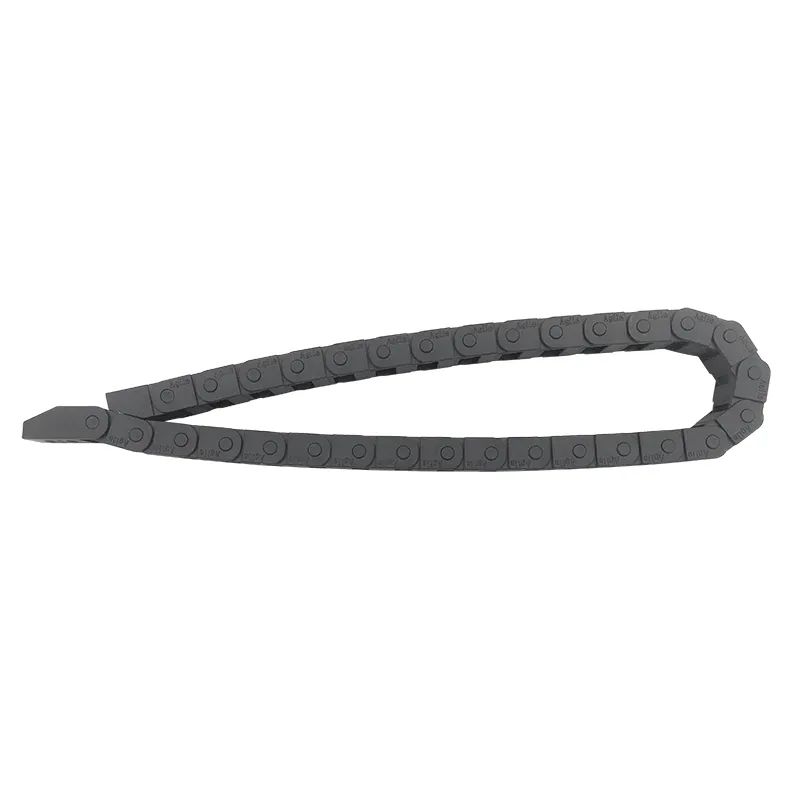electrical cable chain
Understanding Electrical Cable Chains A Vital Component in Modern Engineering
In today's technologically-driven world, electrical cable chains, also known as energy chains or drag chains, play a pivotal role in a variety of industries, from manufacturing to telecommunications and robotics. These innovative structures are designed to manage, protect, and guide moving cables and hoses, ensuring that they function effectively and efficiently in dynamic environments. This article delves into the importance, components, and applications of electrical cable chains, highlighting their significance in enhancing operational efficiency and safety in various sectors.
What is an Electrical Cable Chain?
An electrical cable chain is a flexible and durable conduit that holds and organizes electrical cables, hydraulic hoses, and pneumatic lines. It is composed of interconnected links that create a channel for the cables to move freely while being protected from wear, tear, and external elements. These chains come in various sizes and materials, allowing them to be customized to the specific requirements of an application. The flexibility of cable chains makes them ideal for machinery and equipment that has moving parts, as they can accommodate linear and rotational motion.
Importance of Electrical Cable Chains
The primary purpose of electrical cable chains is to protect cables and hoses from damage caused by friction, tension, and environmental factors. In applications where cables are frequently in motion, such as robotic arms, CNC machines, and conveyor systems, untreated cables can easily become tangled, kinked, or subjected to excessive wear. This can lead to operational failures, decreased productivity, and increased maintenance costs.
By implementing electrical cable chains, businesses can minimize these risks. The chains provide a structured path for cables, reducing the likelihood of tangling and misalignment. Additionally, they help to prevent abrasion against surfaces, safeguarding the integrity of the cables and extending their lifespan. This is especially crucial in industries where equipment downtime can result in significant financial losses.
Components of Electrical Cable Chains
Electrical cable chains are typically composed of several key components
1. Links The basic building blocks of a cable chain, links can be made from a variety of materials, including nylon, steel, or polyurethane. The choice of material depends on the application’s requirements regarding flexibility, weight, and resistance to chemicals or temperature.
2. End Connectors These components are used to attach the cable chain to machines, ensuring stability and proper alignment during operation. They come in different configurations to accommodate various mounting styles.
electrical cable chain

3. Internal Dividers Some cable chains feature internal dividers that allow multiple cables or hoses to be organized neatly within the chain. This prevents tangling and provides easier access for maintenance.
4. Covers In environments where external debris or harsh conditions are a concern, covers can be added to the cable chain to offer additional protection.
Applications of Electrical Cable Chains
The versatility of electrical cable chains allows them to be utilized across a wide range of applications
- Manufacturing In automated factories, electric cable chains are commonly used to manage the extensive wiring necessary for assembly lines, robots, and conveyance systems.
- Robotics In robotic systems, cable chains are essential for ensuring the safe and efficient movement of lines and cables as the robot performs tasks.
- Theatrical Rigging Professionals in lighting and stage production utilize cable chains to keep electrical wires organized and out of the way, ensuring safety for performers and crew.
- Automotive In the automotive industry, cable chains are employed in assembly processes and in the management of cables within vehicles, contributing to cleaner designs and enhanced reliability.
Conclusion
Electrical cable chains are indispensable in modern engineering and manufacturing environments, providing essential benefits that enhance efficiency, safety, and the overall lifespan of critical electrical systems. As technology continues to evolve, the design and application of cable chains will undoubtedly adapt, continuing to play a crucial role in supporting our increasingly automated and interconnected world. Investing in high-quality cable chains can significantly reduce operational risks and maintenance costs, making them a vital component for any business that relies on complex machinery or intricate electrical systems.








